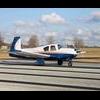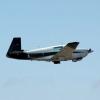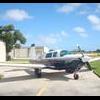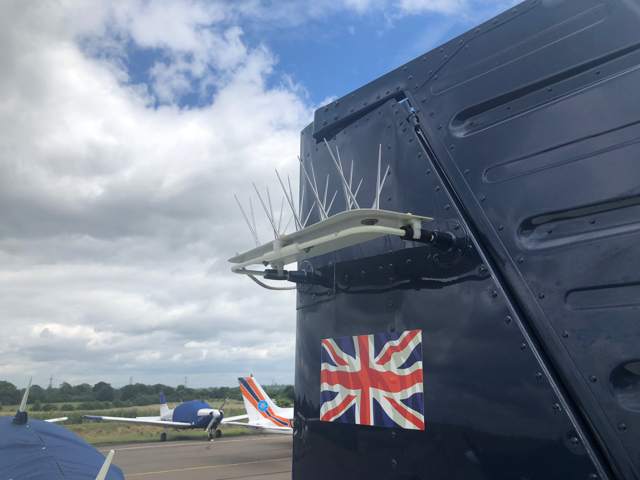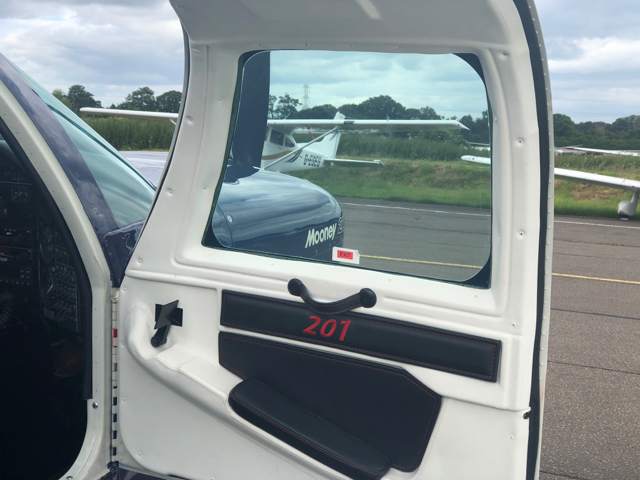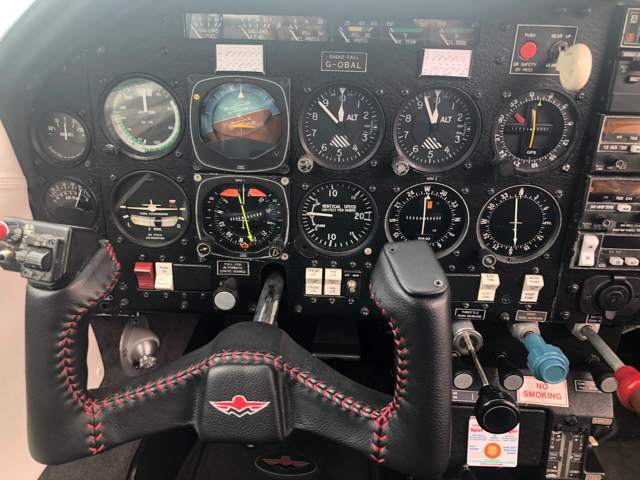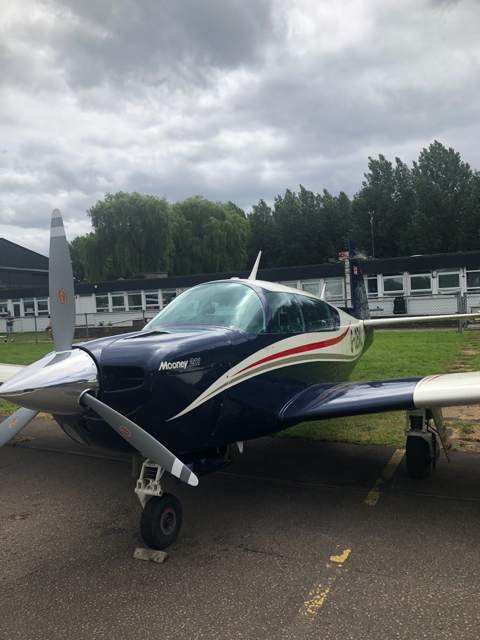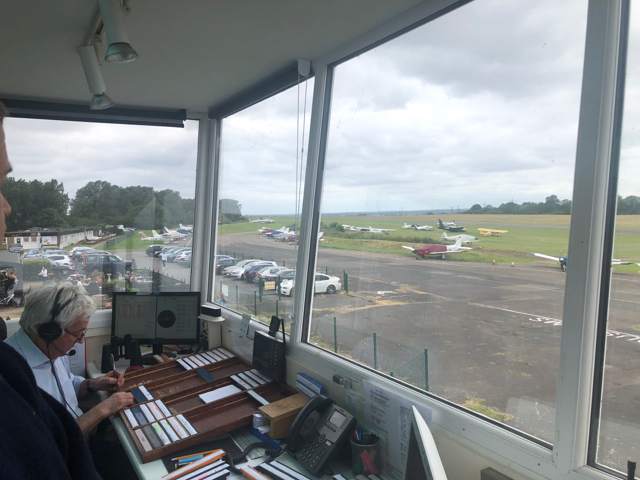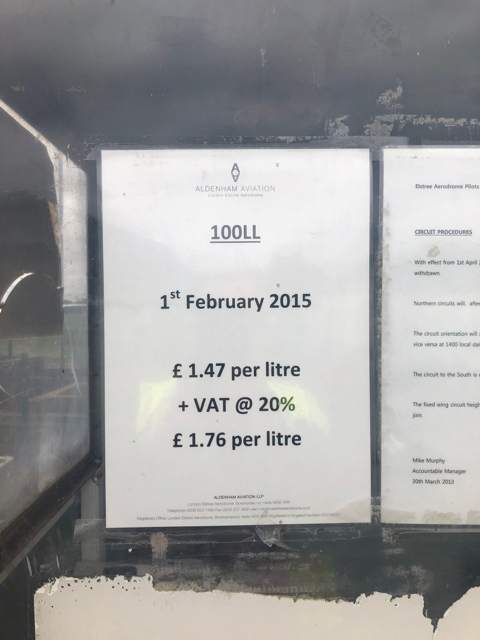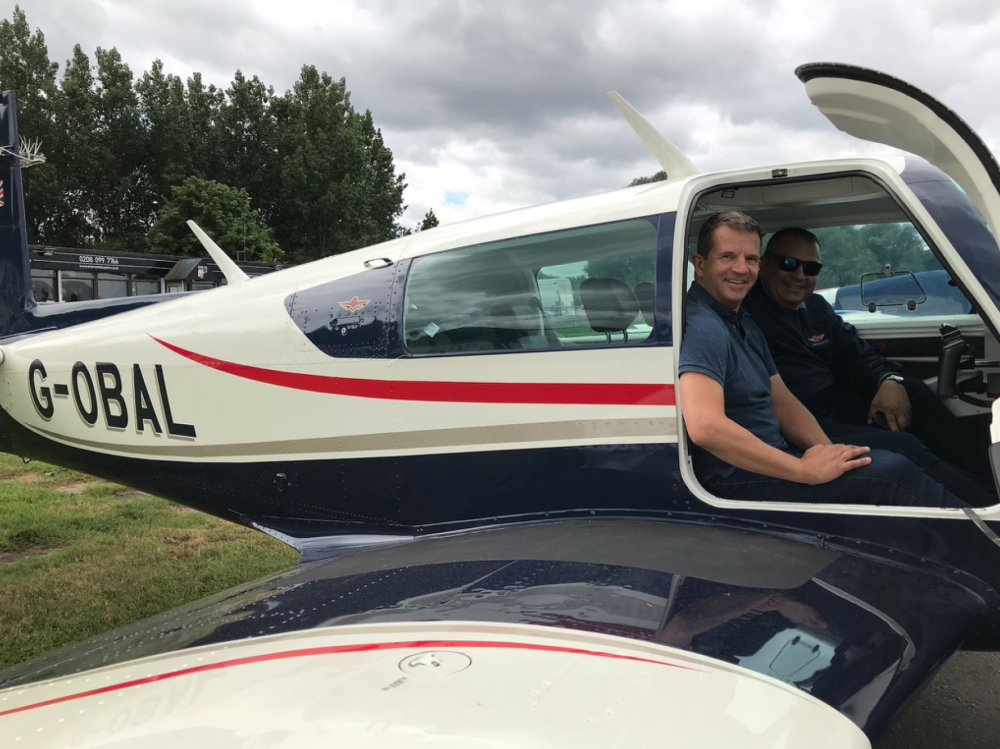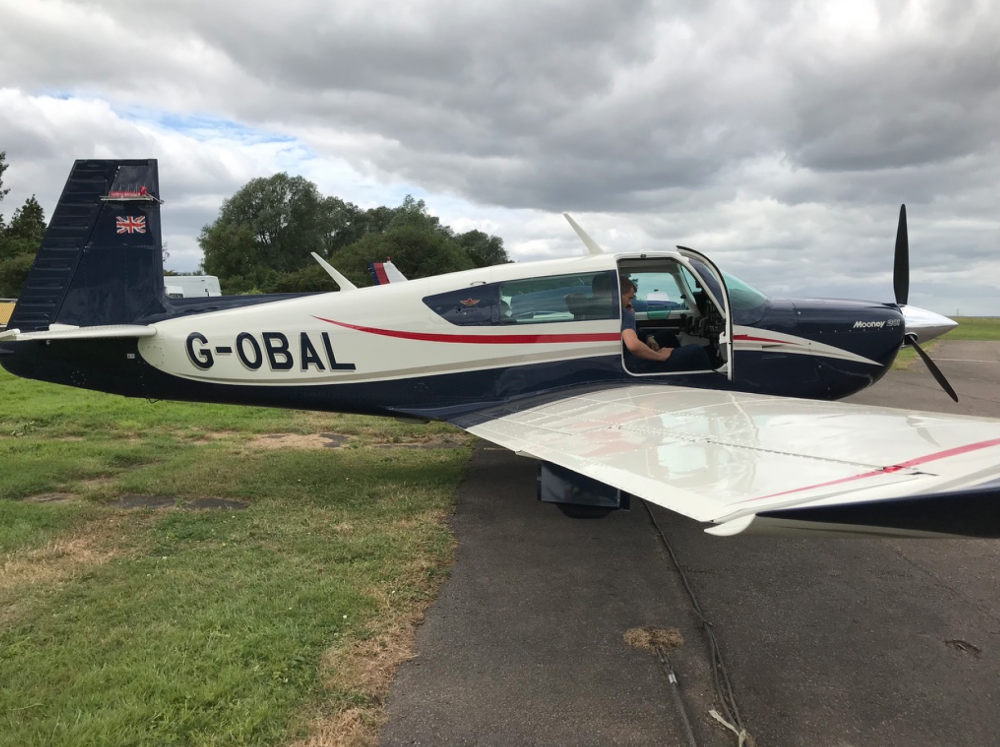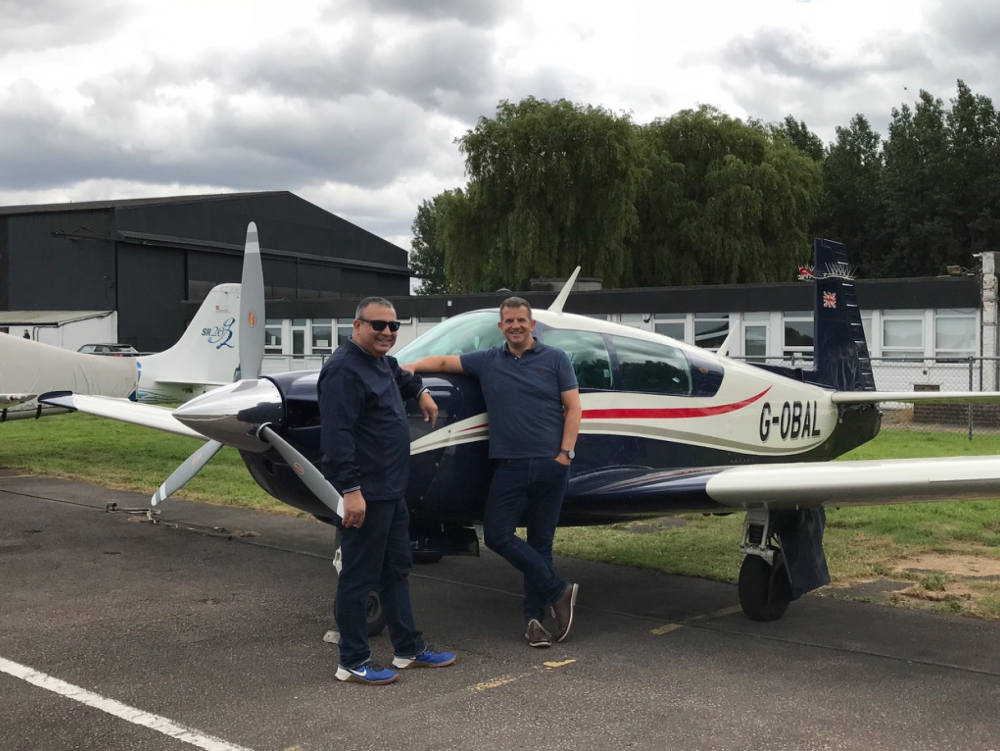Leaderboard
Popular Content
Showing content with the highest reputation on 06/20/2018 in all areas
-
Ok, so it wasn't "today's" flight, but I just got the pictures from a flight we took on Memorial Day around St. Louis. Big thanks to @Junkman for leading our tour and to my brother, Matt, for being our photographer. My dad, Everett, rode copilot with me and my son, Matthew, rode copilot with Junkman. Photos in order: Preflight briefing, taxi, Daniel Boone bridge, river bluffs, the Stan Span, Gateway Arch, Busch Stadium, Budweiser brewery, close formation, post flight smiles.5 points
-
-a- There is no next. Fifty years and 30K+ hours is enough. Loved the Ovation2, but moved to Texas from AZ and couldn't find a nearby hangar. I was driving 45 minutes to a crappy hangar in Lampasas with dirt floors and a lip that was very difficult to get over. In addition, the 'boss' was becoming a nervous flyer every time we hit a bump. All good things must eventually come to an end and I didn't want such a nice plane to languish, so I found a new home for it here in Georgetown. The new owner is giving me visitation rights, so maybe I can right shotgun for approaches or an occasional breakfast. Dave4 points
-
I used to fly a very nice (panel, paint, interior, speed mods) and very fast (according to DMax) M20C... and sold it to get a 252. No matter how nice the C, the 252... Wow.4 points
-
That’s not true about flap limitation speeds applying to full flaps only. Only a few of later model Mooney’s including the later J’s have a higher limit speed for approach flaps. But when this applies the flaps have a detent position for this setting, it’s in the POH and it’s in the TCDS. Without those caveats it doesn’t apply. Which is one reason my approaches are flown without flaps since I am the top of flap range and sometimes above. Sent from my iPhone using Tapatalk3 points
-
Now EVERYONE will want to come in for the St Louis formation tour! And everyone is welcome! Had a great time with "Patches" and his family, to include a celebratory lunch following our flight. The friendships afforded by our passion for flying are priceless. Cheers, Rick3 points
-
Or if you're like me, I operate off of grass most of the time, so I lock the brakes on landing and slide into the home hangar thus saving both tire tread and brakes! The grass grows back.3 points
-
Just finished my CPL last month. I used my own plane. Personally, for me I completed the CPL to be a better pilot, in my own plane-an Acclaim. I was also initially concerned about abrupt power settings, slick airframe etc. This is what I learned..... -Our Mooney's offer little forgiveness in the commercial maneuvers. You can get way out of specs really fast. Lazy 8's and precision power off landings in particular were the most difficult for me. However, with practice they are very doable and you can master them-you just need stick time and a few pointers. Know your aircraft and hone your skills and you will be just fine. This is the point/purpose of obtaining a CPL. -Most of the maneuvers require a steady platform with very small corrections. The Mooney is great for these (360 power on turns, eights on pylons, steep spirals). -The CPL maneuvers are best performed 90% visually-looking outside the plane. Pick a spot on the cowling and it's reference to the horizon-learn what things look like. Occasionally peek at your instruments to verify trends. As an avid IFR guy, I had a tendency to focus to much on the panel. I doesn't work. -Power changes are not an issue in your own plane. As PIC you choose when the maneuver is completed. I was very clear with the instructor and examiner that we will need to cool down a bit before the maneuver, if I was required to pull power abruptly. All the maneuvers are done at Va which is usually a fairly low power setting anyway (16 inches in the Acclaim). After climbing (high power setting) to complete the steep spiral, I just slowly backed off the power and let the temps drop before pulling power. No one had issues with being "kind" to my engine. In fact, they were impressed that I was thinking about the totality of the flight and took initiative. -Speed brakes offer little help. In fact, I found them of no use. Just figure out the power setting for Va, let your bird slow down then do your thing. My examiner did not care if I used them as part of my "protocol" to complete a particular requirement. You just have to be able to explain exactly what you are doing and why. -What I found to be very helpful was to have intermediate points in each maneuver that required precision altitude/speed. I would then adjust pitch/bank/ rudder/throttle to keep myself within a reasonable spec. By the completion of the maneuver I was always spot on. -During the exam be aware of what is going on both inside and outside the plane. My examiner started hyperventilating on the first part of the "planned" cross country trip. He used this (ya, fabricated issue) to terminate the trip and set up for an emergency landing at an unplanned location. He was looking to see that I could handle a passenger issue and fly the plane safely. I dished it back by having him sing a favorite song with his face in a sick sac. It kept him distracted so I could pull up the nearest airport info. -As far as flight training....I spent about 6 hrs with an instructor. 3/4 the time was spent up front learning basic flying techniques, the rest was spent after I had practiced about another 5 hrs. I felt very confident knowing the numbers (and looks) for multiple points in each maneuver and could reproduce them consistently. -I'm not sure a "Mooney" specific instructor is necessary. Some one who really understands the procedures and how they are to be completed correctly is all you need. The flight principles are the same and work for all makes of aircraft. The numbers and visual may be different but that's what personal practice will iron out. A Mooney does not need to be flown differently from other aircraft. Things just may happen a little faster is all. You will learn to stay ahead of your plane. A very good habit to learn. -Ground school. I personally completed the King course and passed the written exam on my own time prior to the flight stuff. The King program (there are other good ones as well) can be done at your leisure, in leu of time spent watching TV. I will most likely never fly for hire. However, I am glad I completed my CPL. Even after >5,000 hrs of experience, I was able to further polish my skills and become more knowledgeable about flight, work flow and weather. Pushing yourself to continually improve keeps you safe. An unintended perc.- although it may or may not be true........passengers, friends and family feel added comfort knowing you are commercially rated. The relatively small $$ investment is well worth it.3 points
-
Just to be clear, though, don't get your hopes up. The brakes just aren't very good compared to many other airplanes. On touchdown I bring the flaps up right away in order to make the brakes available as early as possible. I'm told the master cylinders are relatively small, which limits the effectiveness of the braking system compared to some others.3 points
-
During all of my transition trainings, at some appropriate time, I will simulate an engine failure. I have been emphasizing how to manipulate the controls and find a suitable field even if it is the airport. I have not been emphasizing the importance of immediately (and what should be a memory item to do when time is of the essence and there is no time to pull out the checklist) switching tanks. And as ridiculous and improbable as it may seem to accidentally end up with a tank dry when there is plenty of fuel in the other tank, there are unusual chain of events that can occur that can lead to that outcome. Don't let it happen to you. Always, and I mean always, pre brief before takeoff what you will do in the event of an engine failure on takeoff. It will save 4 to 5 seconds of "startle effect" along with possibly saving your life.2 points
-
I don't put the flaps out until I have the runway in sight on approach. I realize that if it was an approach to minimums it could get kind of busy in the last few seconds in which case I would probably just land with no flaps. Its not that hard.2 points
-
Ya, but that chart also says full rich mixture. If you are still full rich at 18,000' the engine probably wouldn't even be running.2 points
-
My problem is that maximum speed for flaps in my plane is 100 mph but the best speed for an enroute climb is 120 mph so I retract at 400 AGL and trim for 120 mph.2 points
-
As @Marauder said, if there's any chance you'll (your friend) sell the plane in the next 10 years it makes no sense to buy a fixer-upper and fix it up. And for someone just getting back into flying.... and especially with that kind of disposable income, there's no chance he keeps it 10 years. I'd recommend to him that he look for a top of the line, example. Be that a J, Eagle, Ovation, etc. Get one that is ready to fly just the way it is and then fly it. Undoubtedly within a year, he'll either move on to something else or be shopping for a late model Acclaim. Just my $0.022 points
-
Well MS, 5612Q is now in Savannah with me! I got my insurance checkout on Saturday out at KMRN, then flew up to KFCI for fathers day, really stretched the wings on Monday by flying back to Savannah from Richmond. IDK if she is fast, average, or slow but I was mostly at 6500' doing 141 TAS @ ~9GPH (LOP 40-50 per the G2). Only real squawk is the 12volt outlet does not seem to work and the top door latch has come unlatched on take off twice! I'm also working the IFD 440/GDL88 incompatibility issue, I'm fighting going back to the 430W but not sure how I feel about another 3+ AMUs for a new ADSB out transponder when the 430w/GDL88 worked for in and out.2 points
-
On my ATP checkride in that gawd awful Seneca. The examiner discreetly reached down between the seats and shut the fuel off to one of the engines. When it quite I reached down and switched tanks which turned the fuel back on. He was a bit mad and said he wanted to see how I would handle an engine failure. I said I did.2 points
-
1 point
-
Any runway long enough for an ILS certainly is long enough to land my 252 without flaps. The one time I flew an ILS all the way to absolute minimums, I landed without flaps. On a non-precision approach, the ceiling would be high enough to work out flaps once the runway is in sight. It's good to be comfortable landing at various speeds and in all configurations.1 point
-
Conversely, it's hard to imagine a scenario where old brake fluid would get hot enough for long enough to boil off moisture. At worst, we might stand on the brakes for what, 10 seconds? The rotor will get hot, but I can't imagine there's enough time for the fluid to heat up in that time. Afterwards, sure the brake fluid might heat up enough to get water vapor bubbles, but by that time you're taxiing. It's not like automobile brakes where you might be standing on the brakes multiple times in a row. Old fluid might cause corrosion from the absorbed moisture, but I can't imagine it would realistically affect braking performance.1 point
-
Thanks for sharing your horror story! Who did your CMI pump rebuild? Did they bring it up to the latest pump configuration for your TSIO-520 called out by CMI? Your story is a good lesson/reminder for many that think its okay to load the family up or depart IMC right or even for a long x-ctry flight right after extensive maintenance when really a maintenance flight is is required to prove the aircraft is all okay first. Ground run ups only go so far.1 point
-
Agree. Dumping flaps just adds to a busy workload particularly since extending flaps was accompanied by a lot of up pitch trim that will have to be undone while pushing yoke down.1 point
-
My POH says VFo is 109 KIAS. That sounds like you can’t operate them above them either in the 15° or 33° position. Sent from my iPhone using Tapatalk Pro1 point
-
Me, too--never used the fuel pump when switching tanks, just lean down and turn it. Run dry once, engine quit running at 9500 msl--airplane pitched down strongly to maintain trimmed airspeed; switched tanks and it immediately restarted. Almost run dry once, just a cough or two on descent, switched and immediately smooth. I don't wait to be "over and airport" either--how hard is it to switch back to the other tank, figure remaining endurance and look for a good airport with fuel?1 point
-
I'm not sure it's in the manual (I quickly flipped through and couldn't find it), but it was openly discussed in one of the sessions a few weeks ago in Fort Worth. I also confirmed that I heard that correctly with the instructor that I flew with because that's the first time I'd heard it. That being said, if this information is incorrect (or I misheard), I would like to be corrected here...that's why I posted. Maybe someone that also attended the Fort Worth PPP can confirm or deny?1 point
-
My images turn sideways sometimes from the iPhone. If I just resize them a notch on the editor thingy and then post, it corrects the sideways post. Makes no sense but it works.1 point
-
1 point
-
That’s good Anthony. My DPE is looking for my logic in such a case, like you have laid out here. My answer was, it is not in the POH so expect to land longer given no flaps, but leave em up versus down if I am on the last few amps of power, and find a suitable runway. Russ1 point
-
Rather than start a new thread on this, can we get updates on the state of the art of new LED landing lights?1 point
-
I went from crumbly C to a pretty nice O.... No convincing required. Probably works for the 252 as well. Best regards, -a-1 point
-
1 point
-
I told @N201MKTurbo that I’m trying to wear this one out (at 250 hours over the last 12 months, I’m doing my best!) so I can convince my wife I need a 231 or a 252. She’s trying to fly Arizona to Florida in the C over the 4th of July. That alone might convince her a bird that flies a little higher and a little faster might be a good way to spend money. Turbo normalizing the C is unlikely, but probably cheaper than upgrading to a 252, hahaha1 point
-
Expect for performance, yes... In real life, no... Real life... has a flap speed that is pretty easy to exceed. exceeding a flap speed bends/cracks a minor spar. minor spars are expensive to replace... Air cooling is crummy at speeds less than 120 IAS... Crummy cooling leads to high CHTs... High CHTs lead to large expenses... T/O flaps add additional drag So, unless you are climbing out over a mountain or trying to clear the local Class Bravo... climb clean @120 and enjoy the ground covering speed with added fuel efficiency and decent air cooling... PP thoughts only... the ancient Mooney texts were creative literary pieces of salesmen’s dreams... part factual, but funky delivery... they didn’t think you would refer to them again after your first few flights... so it seems... You get a few choices... Vx best rate of climb per distance Vy best rate of climb per time VMS best rate of climb per dollar spent overall from an owner point of view... And... that 77POH is great compared to anything available before it...! I’m not a CFI... Best regards, -a-1 point
-
1 point
-
Called them and arranged for an STC to be reissued through an STEC dealer who will confirm part and serial numbers along with conforming installation. $1600.001 point
-
You should have circled the NGT 9000+ also, probably the nicest piece of gear in the panel1 point
-
The tail on 1WS has become part of its personality... Great pics, Brother Matt! Thanks To skydvrboy for posting it all. Excellent words on top of it all, Junkman! Best regards, -a-1 point
-
1 point
-
The short answer is "it doesn't" My 2007 POH only provide landing distances for a specified configuration (full flaps/gear down) and speed. The emergency section provides no data to answer this question either. I doubt older POH's would include this info. The older POH's can be rather scant on information. This is how I would answer the question.... Calculate distance with flaps from the POH accounting for temp, altitude, head wind and runway gradient (because it's all you have). Since you will increase your approach speed with no flaps (based on stall speed), add 100 ft for every knot increased. This 100' number is published in my 2007 POH. Although the answer is not perfect, it's going to be close based on all the info provided by the POH. You CFI's out there....Did I get it right?1 point
-
Hmmm... good question. But I know how much runway my K will take landing no flaps... because I do it all the time1 point
-
Can I assuming the brake pads are not worn beyond limits? If the pads are OK it's likely old gummed up brake fluid. Check theu log books and try to determine if your brake fluid has ever been flushed. Brake fluid will thicken over time due to heat exposure, and you may need to flush at the individual cylinders.1 point
-
Identical thing happened to me a couple of years ago. Phil fixed it for nothing.1 point
-
Yeah, me too Dan! Joe sprayed the final trim color Saturday. I have a MAG Caravan Clinic @ DAN I need to attend beginning noon Friday. So I hope to bring it home Thursday. Cutting it really close. I will be talking to Joe today and hope to fly down Wednesday night. I think you can be sure that I will post a pic or 2 here.1 point
-
For those of you who don't know the famous Gimli Glider story, a serious complex causal chain let this airliner run dry over Canada. The others I know of were less complex failures, like the Avianca jet over Long Island. https://en.wikipedia.org/wiki/Gimli_Glider https://en.wikipedia.org/wiki/Avianca_Flight_521 point
-
I got to see a famous Mooney today. We didn't actually fly, but I guess there was flying involved to get here. Andrew's @Hyett6420 beautiful M20J G-OBAL! With a largely original 1987 panel it is one of the nicest J's I've ever seen. The paint is absolutely perfect. Unfortunately there is some paperwork that is keeping it grounded at the moment. Thanks to Andrew and Andrew for a great day at the airport! I can imagine this is an amazing way to get the South of France for holidays or just across to Normandy for lunch. The interior designed by Andrew and created and shipped to England by Hector at AeroComfort in San Antonio is incredible. Here's how you keep the birds from roosting on the antennas. This is about $8.86 per gallon for 100LL and it's probably gone up since then. We spent some time in the Control tower as well learning the English way of controlling traffic. Cheers1 point
-
Probably not much help, but mine are just the cost of parts. I do my own inspections.1 point
-
If something big and thirsty asked to get in ahead of me I think I'd not have a big problem. Just a matter of common sense and courtesy. If someone starts giving lots of attitude however I might start quoting FARs.1 point
-
1 point
-
I will give you one thing, you are consistent. All I do know is the day you and I agree on something, I’m buying a lottery ticket and loading my shotgun. Why? Either I’m going to hit the big one or the zombie apocalypse has started. Sent from my iPhone using Tapatalk Pro1 point
-
But ya gotta look at the long term picture... Increasing the comfort in the plane equates to a pleasurable experience. An increased pleasurable experience means when you say "Hon, I sure wish I had this gizmo in my plane, it would make the flight more pleasurable and safe" you'll get that approval for that overpriced gizmo. Worked for me. My wife is the one that suggested I get the ADS-B stuff done early and with TAS included. She is also the one that keeps asking for more trips. The short seat bottom is an issue. Not difficult to correct with an extension of the memory foam. I never knew how bad my seats were until I had them redone. The memory foam makes a world of difference over that stuff they used in the 1970s.1 point
-
Oh, it's good clean fun and it doesn't cost much. The worst thing you can do is make your plane fly real crappy.1 point
-
The travel boards will just get you to a starting point. You always have to do some test flying and tweaking to get it to fly straight. I did some experiments with my old plane about 30 years ago and the higher you rig the flaps and ailerons the faster the plane goes. You are limited by the inboard flap fairing. The height of the flaps and ailerons has nothing to do with having a heavy wing. The best way to fix a heavy wing is to adjust the flap up stops. Start with a 1/4 turn down on the heavy wing and a 1/4 turn up on the light wing. If the plane flys straight without a heavy wing but the ailerons are uneven then you will have to adjust the trailing edge to even them out and re-adjust the flap stops. It is a bit of back and forth.1 point




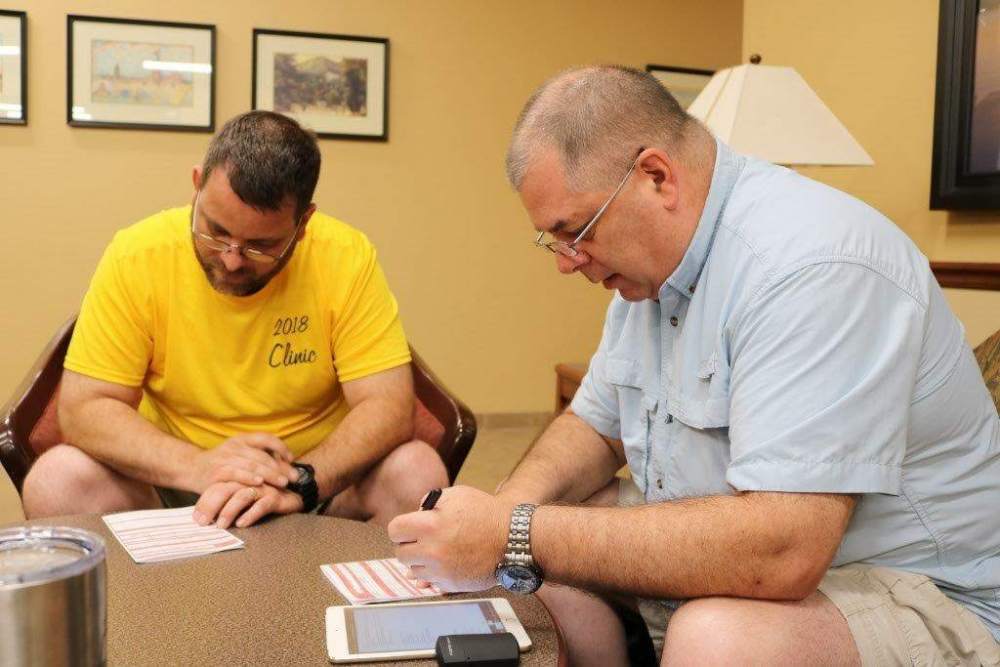
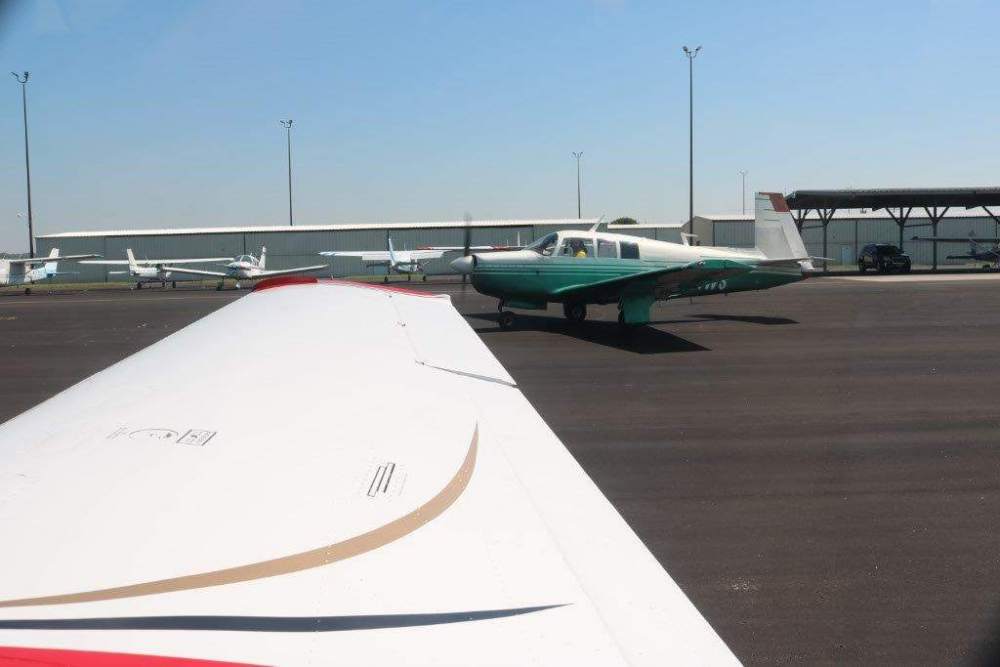
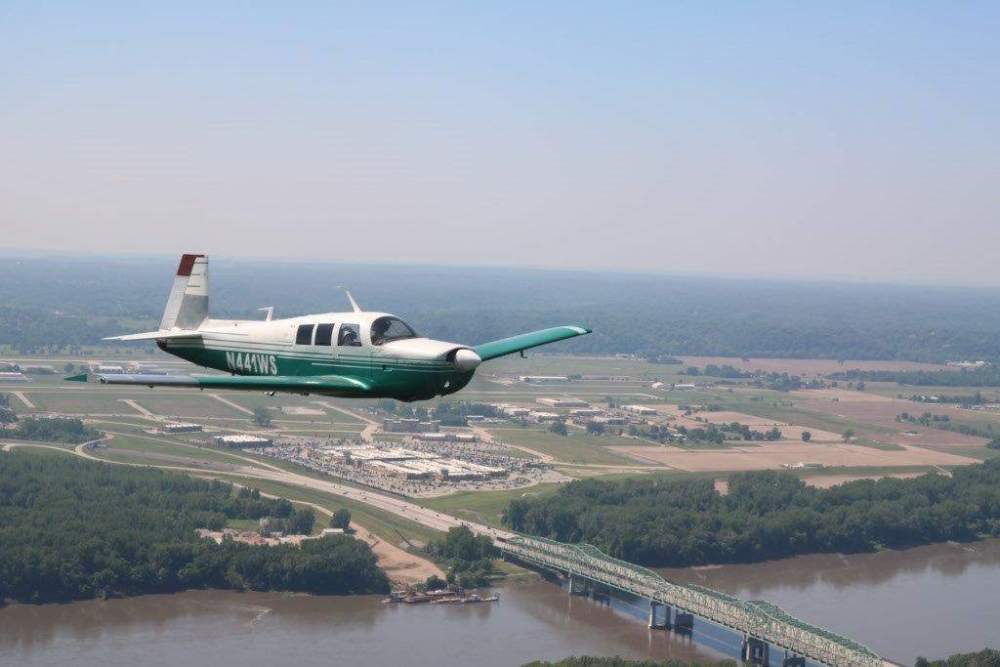
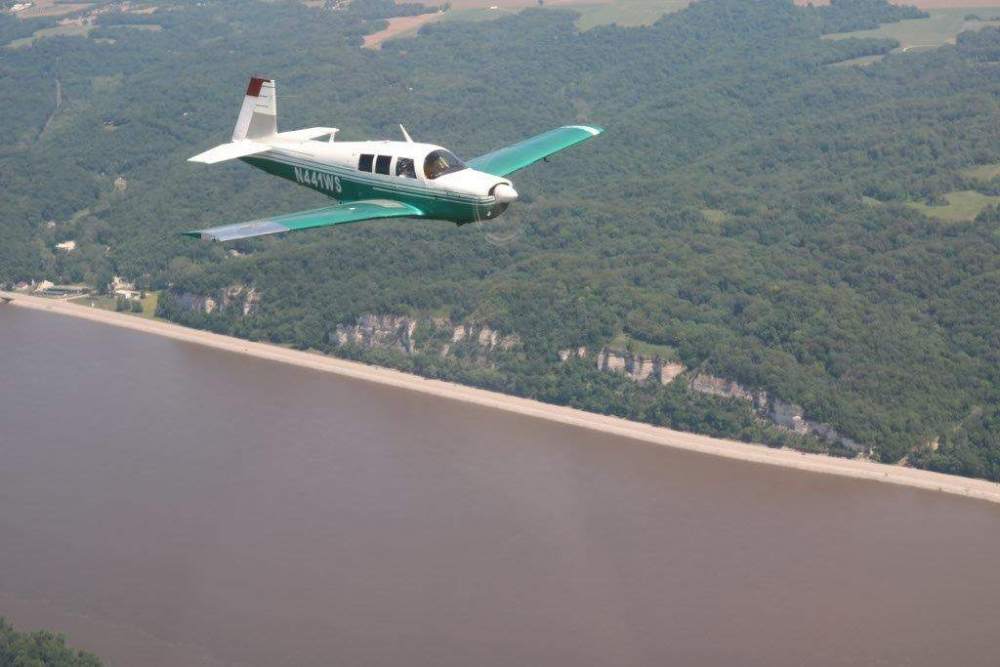
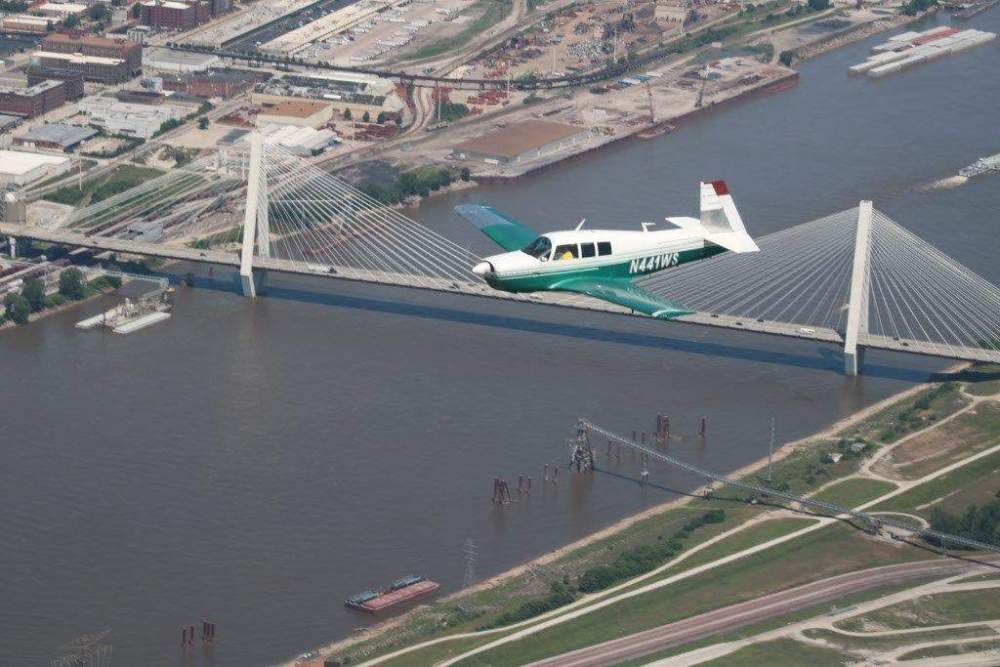
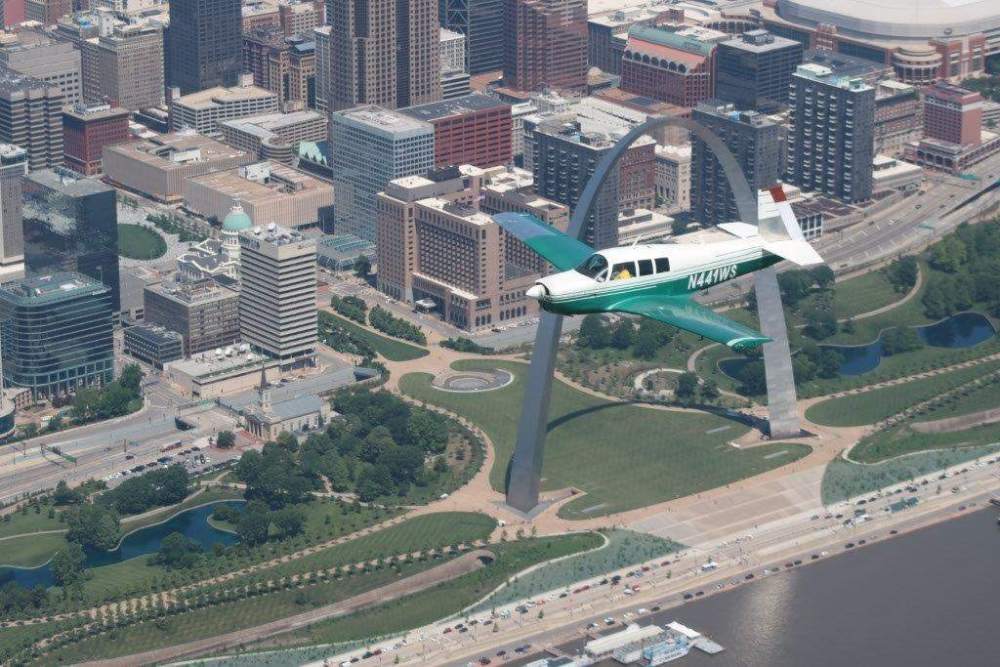
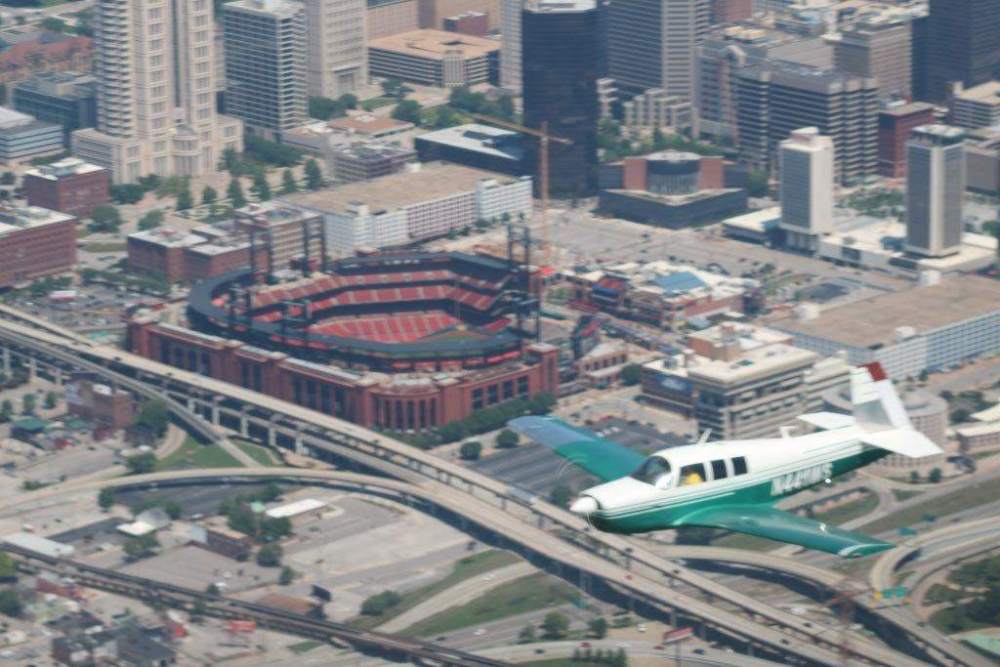
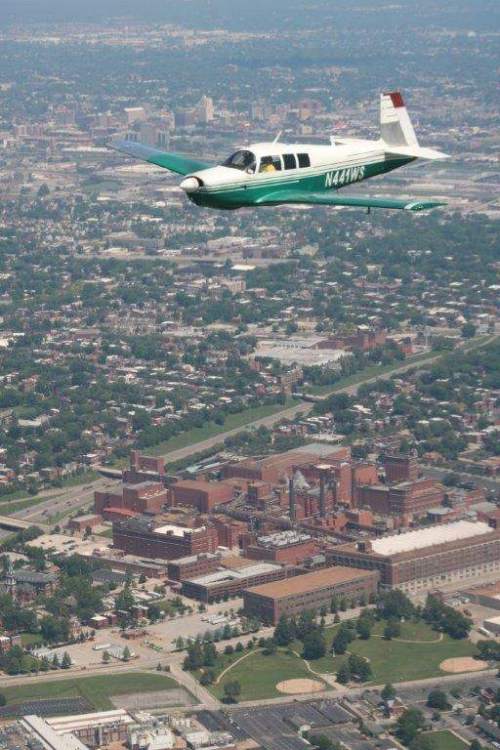
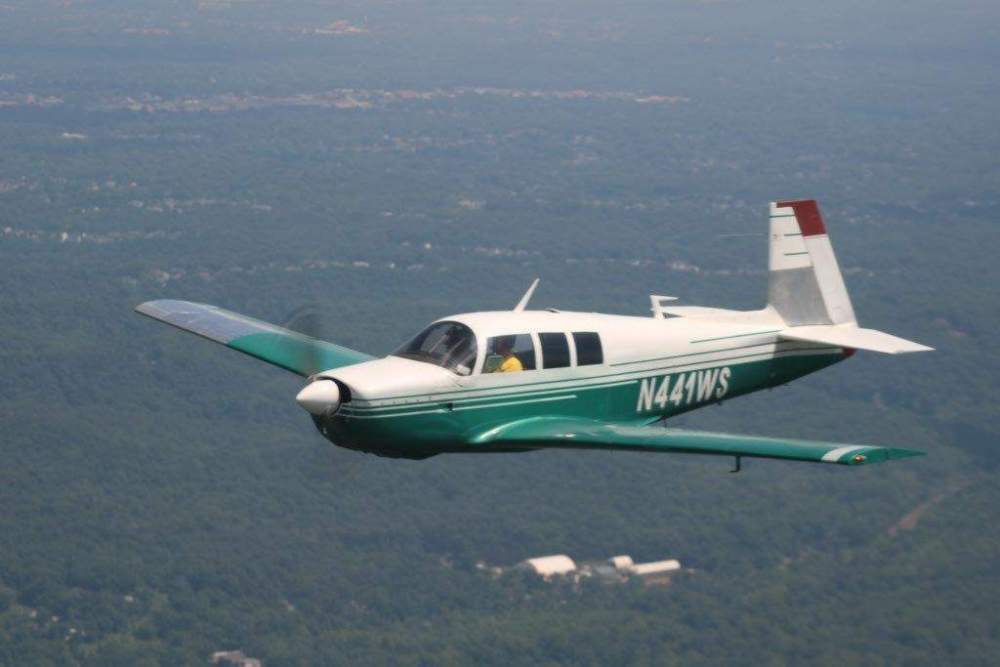
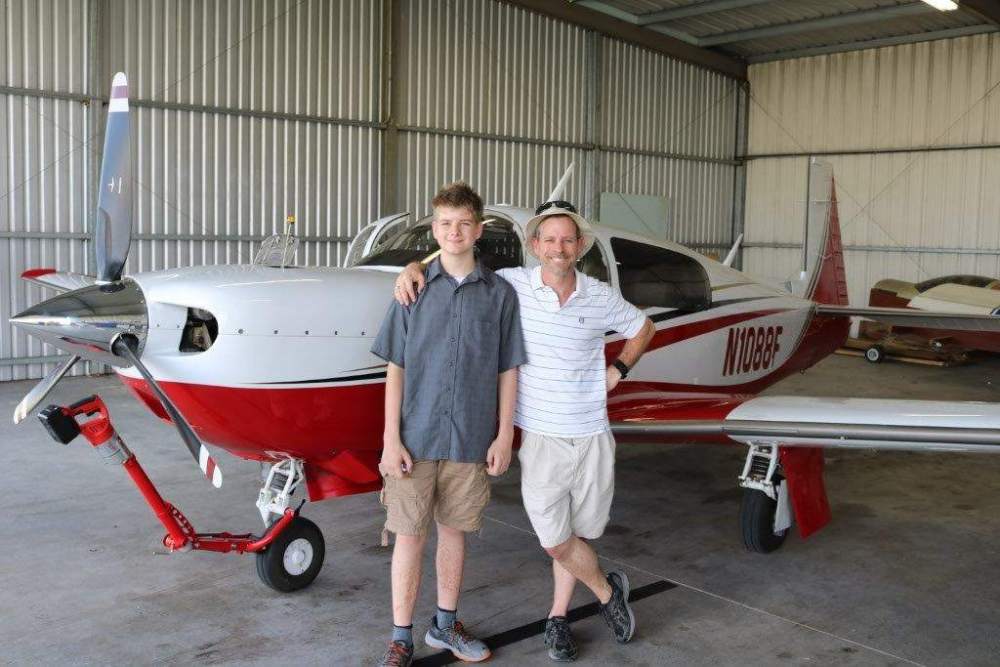
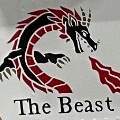












.thumb.jpg.3b7e6053543e5b3f345615b9eb4a086e.jpg)

